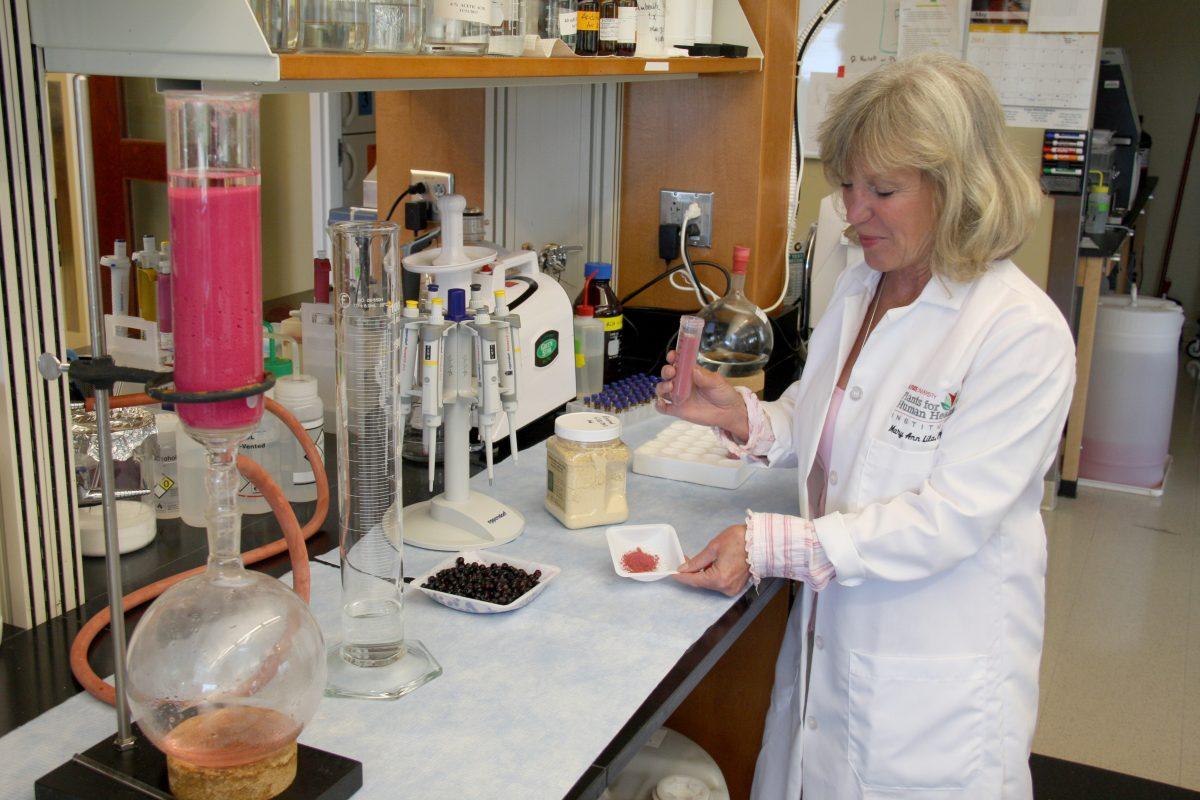
Courtesy of Justin Moore
A team of scientists in Dr. Mary Ann Lila’s lab at N.C. State’s Plants for Human Health Institute have developed a peanut-based flour that could lessen life-threatening allergic reactions to peanuts.
Researchers at N.C. State’s Plants for Human Health Institute have recently developed an ingredient that could potentially help to lessen allergic reactions for people with peanuts allergies.
The ingredient is a combination of ingredients found in fruits and vegetables, as well as in peanut flour. This mixture works to hide the proteins that induce allergies and has been effective in tests so far, according to Mary Ann Lila, director of the N.C. State Plants for Human Health Institute.
Researchers are hoping the ingredient will soon be able to be tested on mice, and the results look encouraging from what has been seen so far, according to Lila.
Much of past peanut allergy research has been solely geared toward the study of polyphenols, biochemical molecules found in plants that showed potential for reducing allergic reactions. However, until about two-and-a-half years ago when Lila and other researches began altering their methods, these treatments all only achieved a mild depression of allergy symptoms, Lila said.
Lila and her team got the idea to mix fruit juices with polyphenols, taking advantage of the bonding properties to help mask the deadly allergens.
“We had no preconceived notion that this strategy was going to work, so we were thrilled when we found that the treatment had led to a nice depression of allergy symptoms,” Lila said.
Other researchers tried to use enzymatic treatments and genetic modification to make better peanuts, but the research team from N.C. State found a much simpler process with very high efficiency, according to Lila.
The enzymatic treatment usually involved the degradation of allergens in peanut kernels, breaking the allergens down into smaller peptides. These smaller proteins wouldn’t retain their binding properties, thus reducing the allergic response in people who consumed the peanut kernels. But although the degradation was successful, the allergic response was not effectively reduced.
Another approach was to use genetic engineering to create peanuts that didn’t contain allergens. Though this approach was very appealing to researchers, the procedure itself was complex. Researchers had to enter the genome of peanuts and alter the DNA and RNA, effectively silencing the genes that coded for the allergens. Although this strategy also seemed to have good effects, the effects were not significant enough to call for the repetition of such a tedious process.
No matter how promising the research being studied is, researchers and institutes all over the United States are facing tight budgets and limited federal funding, and the Plants for Human Health Institute is no exception.
“The next step is to follow up the research with binding assays, use of human blood samples and mice studies, but funding is the biggest issue,” Lila said.
However, despite the funding problems the team has faced here, Lila said it may have found a promising opportunity to continue with the research outside of the U.S.
The University of Adelaide in South Australia found the peanut research to be extremely interesting, and it is excited about a solution that does not involve genetically modified organisms, according to Lila.
Warwick Arden, provost and executive vice chancellor at N.C. State, is going to make a trip to the University of Adelaide in hopes to partner with its provost and gather joint money to push the peanut allergy research to the next level.
“We are all very appreciative of Provost Warwick’s support, as well as the support of Bailian Li, the vice provost of international affairs at N.C. State,” Lila said.
Other N.C. State scientists working on this project team include Mary Grace, senior researcher in the Department of Food, Bioprocessing and Nutrition Sciences, and graduate student Nathalie Plundrich, the project’s research assistant.